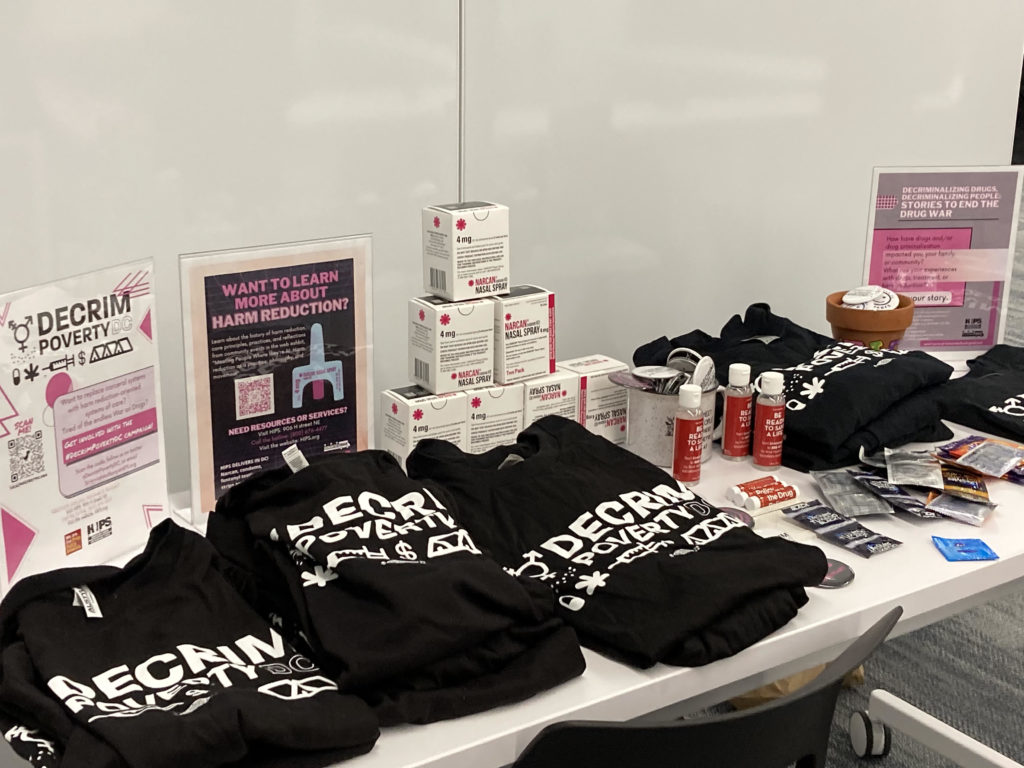
By Melissa Silverman
On February 28, the Southwest Neighborhood Assembly hosted a community meeting with the District’s top public safety leaders, who fielded a wide range of questions on topics from gun violence to opioid abuse and property crime.
The forum was opened by Ward 6 Councilmember Charles Allen and attended by Metropolitan Police Department Chief Robert J. Contee III, Assistant Chief Andre Wright, 1st District Commander Ralph McLean, Fire and EMS Chief John Donnelly and Diane Groomes, Director of Wharf Security and Public Safety. Southwester Editor-in-Chief Mike Goodman moderated the conversation.
Panelists cited the need for an integrated response to the range of public health and safety issues, committing to ongoing cooperation for a response that includes government agencies, community groups and the private sector.
“No one entity will be able to navigate the maze of all the challenges we experience in a community,” Chief Contee said. “MPD is focusing on individuals, not just through law enforcement, but a whole of government approach to bring services to individuals who need them.”
Contee told participants that the police department is focused on a strategic, scalpel-like approach to combating violence, one that focuses on the small number of people who commit the majority of crime in the city. He highlighted a “hot spot” approach to policing and a federal Homicide Reduction Partnership as high-priority initiatives during a challenging time for the community.
“Coming out of two years of a pandemic that completely upended many support systems for people who were vulnerable to begin with, I think we are seeing in the rise in crime nationally and locally what that fallout looks like,” Councilmember Allen said in a statement to The Southwester. “People are hurting and desperate. It’s a both/and approach to gun violence that can produce long-term reductions.”
1st District Commander McLean cited a shift as the COVID-19 pandemic recedes, with violent crime down 9% in the area that makes up lower Southwest and property crime down about 10%, yet the effects of the pandemic continue to be felt in the use and abuse of opioids.
Fire and EMS Chief Donnelly described opioid abuse as a widespread problem across the city and across socioeconomic lines. He cited a city response that includes more than transporting residents to the hospital, but also bringing social workers to areas where overdoses are reported and providing wraparound service including sobering centers and access to addiction treatment.
During a deadly period around January 28th, Southwest saw 13 fentanyl overdoses causing five deaths in less than two days.
“Southwest will be working through the trauma and loss of that Friday in January for years to come,” Allen said. “In a single afternoon, more lives were lost in Southwest than all those lost to gun violence in Southwest during 2021. The holes left in our community and the pain felt are deep.”
In response, local harm reduction organization HIPS hosted a community conversation at the Southwest Library on February 17, welcoming about a dozen community members for a frank discussion on opioid use as well as life-saving training on the use of Narcan, a medication that can temporarily reverse the symptoms of opioid overdoses.
HIPS Community Outreach Coordinator Johnny Bailey offered an “Opioids 101” explainer,
noting that fentanyl, which is at least 50 times stronger than prescription medications like Vicodin, is the leading cause of death from opioids in DC, and is driving an overdose crisis that has spiked in recent years, particularly during the COVID-19 pandemic. According to Bailey, DC residents are more likely to die of an opioid overdose than violent crime or COVID-19.
Community members inquired about neighbors most impacted by the opioid crisis, and HIPS educators noted that 70 percent of overdoses are adults over 40. In the January 28th cluster in Southwest, publicly identified victims of overdoses included neighbors aged 69 and 72.
“The community came together in the last few weeks,” Bailey said when describing the aftermath of January 28. “I’m impressed by how much we came together.”
HIPS works in Ward 6 to provide services such as syringe exchange and access to overdose prevention supplies, as well as linkage to broader support services, including mental health support, access to housing, and substance use treatment in a client-centered, harm reduction environment. A drop-in center hosts support groups and provides clients with access to showers, laundry and a clothing closet.

